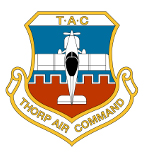Matthew & other readers,
It has been brought to my attention, by a friend, that the Thorp canopy does not actually create much (if any) lift, as evidenced by the fact that the canopy tries hard to close at anything other than idle. To quote: "As designed, there should be little lift generated as John balanced, or better, coordinated, the pressure distribution curves.
The problem with lifting bodies, as explained by John, is that they can generate some really high cooefficients of lift, (above 3.0) but that comes at a much, much greater (than proportional to the) increase in drag."
I was under the impression that the closing tendency in the 3 point attitude, while taxiing, was due to the lift created. In flight, the canopy also tries to remain closed at a nose down attitude of course. I guess that I had never really thought about this issue much, or analyzed it properly. I'm hoping that maybe this will generate some interesting conversation, and I apologize for opening my mouth before engaging my brain.








